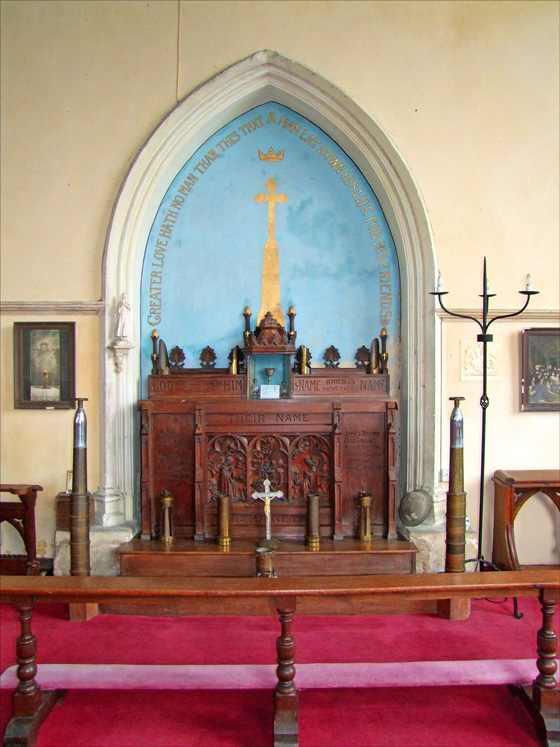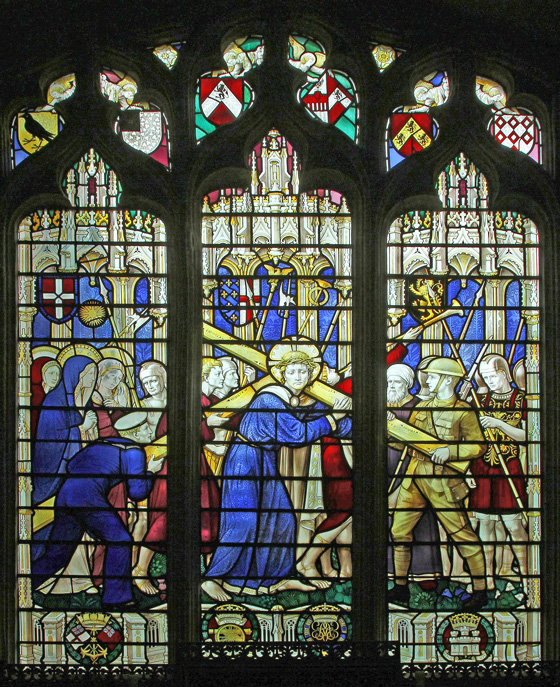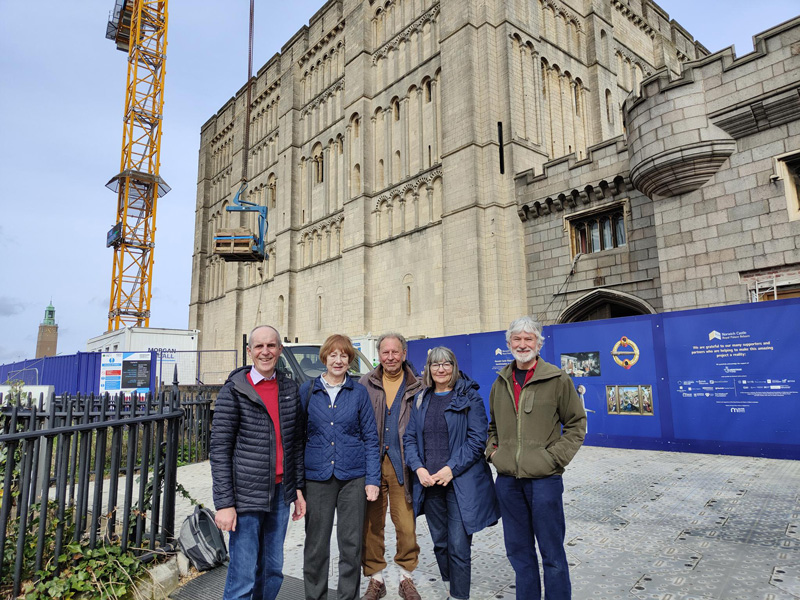Events in Norfolk and Suffolk / Then & Now / Tourist Attractions Norfolk and Suffolk / walks / Waveney Valley October 27, 2014

Memento Mori – Norfolk & Suffolk WW1 Memorials Trails from Art Alive in Churches
East Anglian charity, Art Alive in Churches has produced Memento Mori World War I Memorials in Norfolk and Suffolk. The trail leaflets focus on mainly rural memorials in 17 churches in Norfolk and 13 in Suffolk. Churches have been selected for the stories that the memorials tell.
Norfolk County Council and Norfolk Community Foundation Commemorating WWI have helped fund the project.
The leaflets can be downloaded from Memento Mori in the projects section of www.artaliveinchurches.com. Leaflets can also be picked up at participating churches or viewed by clicking the links below:
–
Jennie Hawks, Director, Art Alive in Churches said: “Art Alive aims to increase understanding and appreciation of the wealth of heritage, arts and crafts in East Anglian churches. With this year’s 100th anniversary of the start of the First World War, we decided to focus on the memorials to those who made the ultimate sacrifice in the war.”
“The range of memorials is quite amazing. We have selected 17 in Norfolk, and 13 in Suffolk. I recommend exploring our trails as a way to begin to understand the impact of the war on local communities, as well as appreciating the care that went into creating these permanent memorials to the catastrophe of the Western Front, along with Gallipoli, the Middle East campaign and the war at sea.”
Norfolk churches featured are: St Clements Outwell, St Peter Upwell, St Mary Middleton, All Saints Narborough, St James the Great Castle Acre, St Andrew Great Ryburgh, St Mary Cranworth, St George Hardingham, St Peter & St Paul Forncett St Peter, St Mary Forncett St Mary, All Saints Tibenham, St Margaret Tivetshall St Margaret, All Saints Salhouse, St Andrew & St Peter Blofield, All Saints Hemblington, St Peter Lingwood and St Mary Ditchingham.
The churches are open daily with the exception of Tivetshall (open weekdays) and Upwell and Hardingham (locked with key holder living nearby).
Suffolk churches featured are: St Andrew Tostock, St Nicholas Rattlesden, St Mary of Pity Burgate, St Mary the Virgin Bacton, St Andrew Cotton, St Mary Old Newton, St Mary Flixton, St Margaret of Antioch Linstead Parva, St Mary the Virgin Huntingfield, St Michael Peasenhall, St Peter Sibton, St Peter Theberton and St Mary of the Assumption Ufford.
The churches are open every day.
–
Examples of Norfolk Memorials
Ditchingham’s memorial, which was unveiled on September 27, 1920, is black marble and features a life-size bronze figure designed by Sir Francis Derwent Wood. William Carr of Ditchingham Hall, Sir Henry Rider Haggard, the author of King Solomon’s Mines and She and Dr J.F. Bright paid for the memorial, as well as relatives of those killed in the war.
The memorial features Staff Nurse Mary Rodwell who probably died when H. M. Hospital Ship Anglia was sunk by a mine in the English Channel on November 17, 1915. The majority of those commemorated died on the Somme, but a few were involved in the Middle East and Gallipoli campaigns. Source www.roll-of-honour.com.
Narborough was home to the First World War’s largest airfield in the UK. It covered some 900 acres. There are 15 graves in Narborough churchyard of Royal Flying Corps airmen who died in training at the base. There is a granite memorial at the entrance to the church and a handwritten Roll of Honour inside the church.
Salhouse: a new memorial book, A Century Has Not Aged Them, documenting the 19 men featured on the memorial at All Saints is now on display. As well as information about those who died, the book features a description of the Salhouse that the men grew up in, along with maps to illustrate changes over the last 100 years, the history of the war memorial and photographs.
Tibenham war memorial is in the churchyard and was unveiled on 13 April 1920. Twenty-one names are recorded of those who died in the First World War. Before the war, Tibenham had six highly accomplished bell ringers who rang their last three-hour peal together on 13 May 1914. Three of the bell ringers, Clarence Gooch, George Snelling and Bertie Turner died during the war. Fredrick Manser died in 1919. Frederick Seager moved to Yorkshire in the 1920s, although he returned to Tibenham in 1930 and with John Snelling, the only original bell ringer to still live locally, helped ring the first peal since 1914.
–
Examples of Suffolk Memorials

Burgate – the memorial altar carved with the names of local men who died in the war includes furnishings made out of old shell cases.
Sibton – the names of the 11 men from Sibton who died in the war are carved on the churchyard gate.
Theberton – the war memorial includes an additional plaque commemorating the gift of a German gun to the parish in recognition of the award of a VC to Theberton man Colonel Charles Doughty-Wylie of the Royal Welch Fusiliers for his bravery during the attack on Sedd-el-Bahr, Gallipoli on 26 April 1915. Colonel Doughty-Wylie was killed by a sniper, just as the attack achieved its objective.
There is also a separate plaque commemorating the 16 German airmen killed when Zeppelin L48 crashed just outside Theberton on 17 June 1917.

Ufford – the memorial window in the church was designed by Ninian Comper and installed in 1920. It shows Christ carrying his cross supported by a First World War soldier and sailor.








